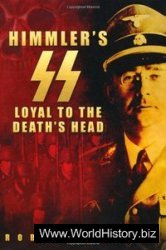By dawn, Rommel’s bridge was across the Meuse at the small village of Bouvignes. Several tanks had already been rafted across the river, but now a continuous column of tanks, armored cars, and artillery was moving westward. The S. Pz. Div had no alternative but to wait at the Meuse while Rommel’s men crossed. This provided Rommel with an opportunity to take command of some of the S. Pz. Div heavier tanks and add them to his own tank forces. By now protests from the S. Pz. Div commander were arriving at Berlin, but little could be done about it. With amazing arrogance, Rommel complained at the way in which his neighboring armored division failed to keep up with his own advance.
These tanks did not move up to the heights of Wastia where, since dawn, the French had been counterattacking the German positions. Neither did the armor swing round to dislodge the French holding the river line farther south. Instead, the tanks moved directly on to attack Onhaye village, the key to the westward advance.
Rommel’s determination to be in the forefront of the battle was even more evident. He left his armored signals vehicle and took command of a PzKw III. About thirty tanks were across the river by the time Rommel responded to a call for help from German forces attacking Onhaye. Rommel’s tank was hit twice and Rommel was cut by a splinter from the shattered glass of the periscope. The driver went full speed for the nearest cover, crashed through the bushes, and plunged down a steep slope on the far side. The tank ended up in full sight of the enemy, tilted too steeply to bring the gun to bear. At that moment a tank commander told Rommel over the radio that his arm had been shot off, the tank ahead of Rommel’s was also hit, and so was the armored signals vehicle following behind. Rommel abandoned the tank. It was a serious situation, and it confirmed Rommel’s theory that his division should open fire at woodland and villages as a way of discovering whether enemy guns or infantry were there. It was sound tactical thinking, but it inevitably increased the number of civilian casualties.
Rommel was particularly fond of tricks and ruses which he claimed were likely to bring success with fewer casualties on both sides. However, it seems unfortunate that Rommel’s instruction that his men should open fire without discovering whether enemy forces were present came at a time when his favorite trick was to have his tank crews wave white flags. One oncoming convoy of trucks encountered by his tanks was shot to pieces by the time is was discovered that they were in fact ambulances.
Rommel’s advance on Tuesday went far beyond Onhaye. It was his success, together with news of other German bridgeheads, which persuaded the French High Command to abandon the defense line of the river Meuse at this place and move back as far as the railway line behind Philippeville. The French generals were beginning to believe reports that thousands of German tanks were west of the Meuse, and their fears were fomented by the energetic way that Rommel put into the fight 100 per cent of his available resources. So far Rommel had encountered only the tanks that the French had thinly distributed among the infantry, but by the evening of 14 May, the French 1st Armored Division, which had begun moving its tracked vehicles three days earlier, was assembling them, together with the wheeled vehicles, just a few minutes’ walk from where Rommel’s vanguard were resting and refueling.




 World History
World History









